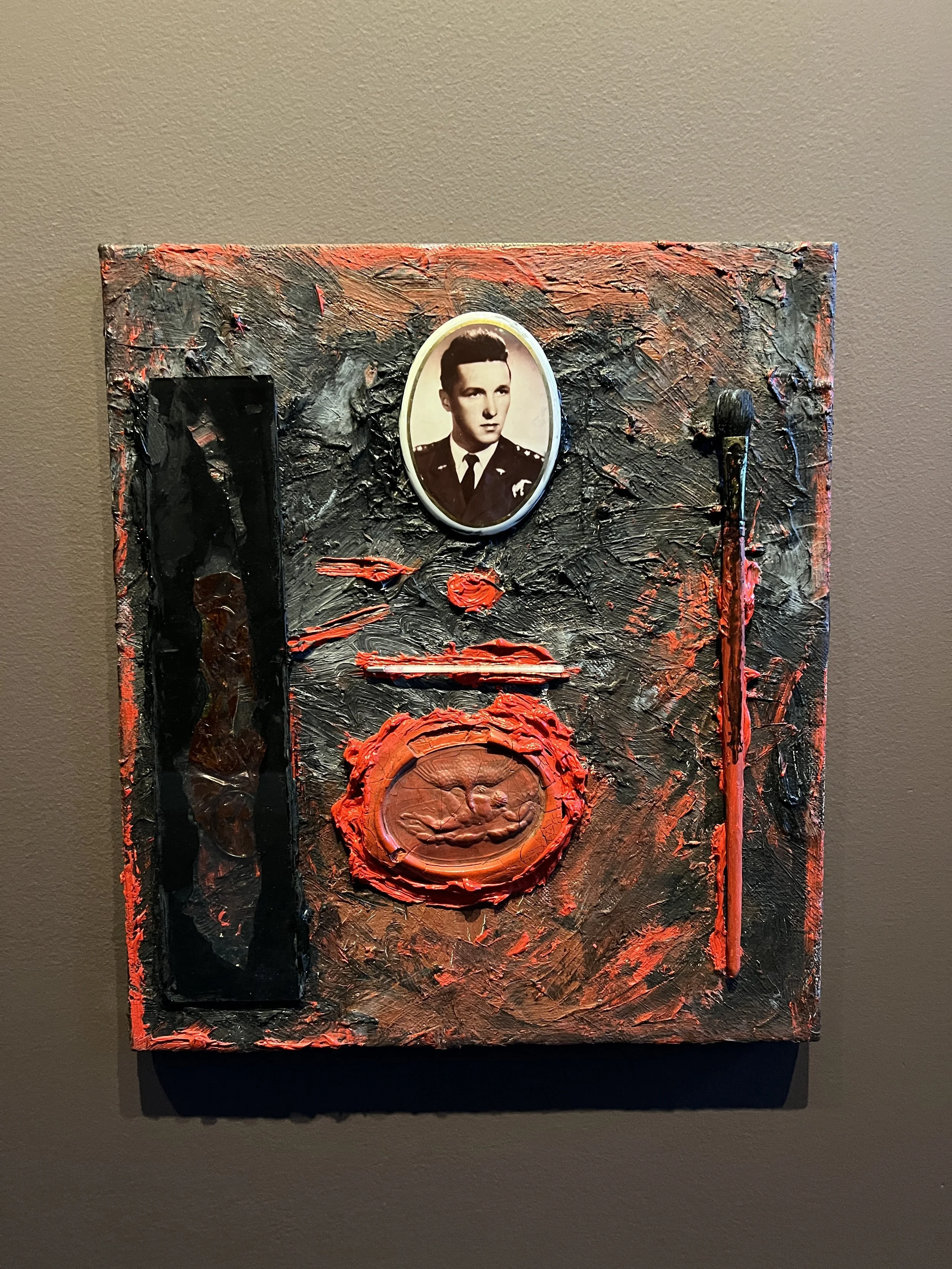Julia Morison: Ode to Hilma, City Gallery Wellington Te Whare Toi
Extended response to the work of Hilma Af Klint, focusing on Klint’s the ten largest’ which had been exhibited in the same gallery 2021-2022. A thematic resonance between the work of Klint and Morison’s five decade long investigation into the power of artistic forms and materials to hold symbolic meaning. This work in turn resonates with me as I build my visual vocabulary, that is personal and yet bold.
Morison’s work is underlined by a complex symbolic system, working within self imposed parameters, materially, numerically or organisationally. This vocabulary is inspired by esoteric and spiritual sources such as Hermeticism, Kabbalah, alchemy and memory systems. This process interweaves symbols, materials and philosophy that can be reinterpreted for a contemporary context. In reflecting on these we can be encouraged to consider the systems themselves.
Morison explores the ways in which meaning cn be shaped through the use of ten symbolic materials, clay, ash, silver and gold to name a few. She draws on a range of knowledge systems from the arcane to the contemporary.
Hugo Koha Lindsay at GOW LANGSFORD
The Plimsoll Line 14th February - 9th March
Hugo Koha Lindsay (Te Āti Awa, Ngāti Maru) is an artist from New Zealand who engages with abstraction-based painting methodologies, viewing abstraction as intertwined with everyday life. He interprets phenomenological experiences and the interplay of macro and micro environments through his art. His work often incorporates personal surroundings and urban influences, using techniques like unstretching, cutting, sewing, and re-stretching canvases to reveal the process of creation. Lindsay’s paintings, which can appear as ambient maps, maintain an open-ended, dynamic approach, evolving continually with his exploration of urban spaces, natural environments, and weather systems.
COMPOSITION 10: WITH NOTATIONS, ADDITIONS AND SUBTRACTIONS. 2023. Synthetic polymer and graphite compound on cotton duck, 450 x 600 mm.
composition 4: with notations, additions and subtractions, 2023
synthetic polymer, graphite compound, water on cotton duck 1850 1550mm
The level of techniques and the affective processes Lindsay is exploring in these works are very clear and cohesive. The muted palette works very well as does the ‘sea’ like colours and grainy marks. A combination of urban and ‘natural’ environments coming together is relevant to the kinds of work I have been making.
Delphinium Days - Derek Jarman at Gus Fisher Gallery
Derek Jarman's most notable period as a filmmaker, painter, and gardener coincided with Margaret Thatcher's rise to power. Coincidentally the same time exactly that I emigrated to England from New Zealand. His first feature film, Sebastiane, debuted in 1976, a year after Thatcher became the Conservative Party leader. Both individuals significantly influenced British culture over the next fifteen years.
While Thatcher dismantled workers' rights, privatized state assets, and controversially addressed the AIDS crisis, Jarman created a body of work that was joyful, sensual, anarchic, and filled with rage against a homophobic, class-conscious society. Trained as a painter at the Slade School of Fine Art, Jarman continued painting throughout his career, which is highlighted in the Delphinium Days exhibition at Gus Fisher Gallery in Tāmaki Makaurau Auckland.1
The exhibition, curated by Lisa Beauchamp, Michael Lett, and Aaron Lister, showcases Jarman's paintings from 1986 to 1993, alongside early Super 8 films and photographs by Howard Sooley. It also delves into Jarman's connection to Aotearoa through his father, Lancelot Elworthy Jarman, born in Waitaha Canterbury in 1907, and a World War II RAF pilot.
This connection is most evident in Jarman's 'black paintings' series, created from 1986 after his HIV diagnosis and his father's death. These works feature shattered glass, crushed beer cans, religious icons, and war remnants embedded in thick black paint and tar. One notable piece, Untitled (Ganymede) (1990), portrays Jarman's father in military attire amidst a canvas of reds and blacks, accompanied by symbolic objects like a glass pane, paintbrush, thermometer, and a medallion depicting Zeus and Ganymede. These paintings reflect a complex father-son relationship marked by grief, war trauma, and societal expectations, themes also explored in Jarman's writings, such as Kicking the Pricks (1987).2
For me these works are the closest to the mixed media collages I have been attempting to expand upon in my work, there is great texture, a sense of immediacy and strength of the work, despite the size.
In his journals, Derek Jarman describes his mixed media works as both 'collage' and 'construction.' These pieces fit within the tradition of Dubuffet’s 'constructions,' Arp’s 'collages,' Rauschenberg’s 'combinations,' Schwitters’ 'assemblages,' and Picasso’s reliefs, which are credited with liberating sculpture. Despite their dynamic nature, the vitality of these constructions is contained within the frame, ensuring they remain pictures. Through a Surrealist lens, the found objects in Jarman's works symbolize a 'return of the repressed,' reflecting the shock and repression of late twentieth-century society's attitude towards homosexuality. 3
These objects, often washed up flotsam or kitschy items from junkshops, introduce a vernacular element. Jarman likened the tar he used to the ocean off Dungeness, describing it as a forceful element that 'capsizes and sinks' forms, holding mysteries in its depths. The black in his paintings evokes the Spanish black of Goya and the darkness made visible by Rembrandt, serving as a shroud to hide from bigots and homophobes. In Chroma, he writes of 'melanosis,' comparing his black paintings to moths that turn black to hide from predators, painting gold into the darkness as a form of protection.4
Derek Jarman, Untitled (Ganymede) (1989). Tar and mixed media on canvas.
footnotes
1 Simon Gennard, "Derek Jarman: The Right Colour for the Video Age," Gus Fisher Gallery, July 2, 2024, accessed June 29, 2024, https://gusfishergallery.auckland.ac.nz/press/.
2 Gennard, "Derek Jarman."
3 Jonathan P. Watts, press release for Amanda Wilkinson Gallery, Black Paintings, Derek Jarman, 15 October - 22 December 2013," accessed June 29, 2024.
4 Watts, "Black Paintings Derek Jarman."




